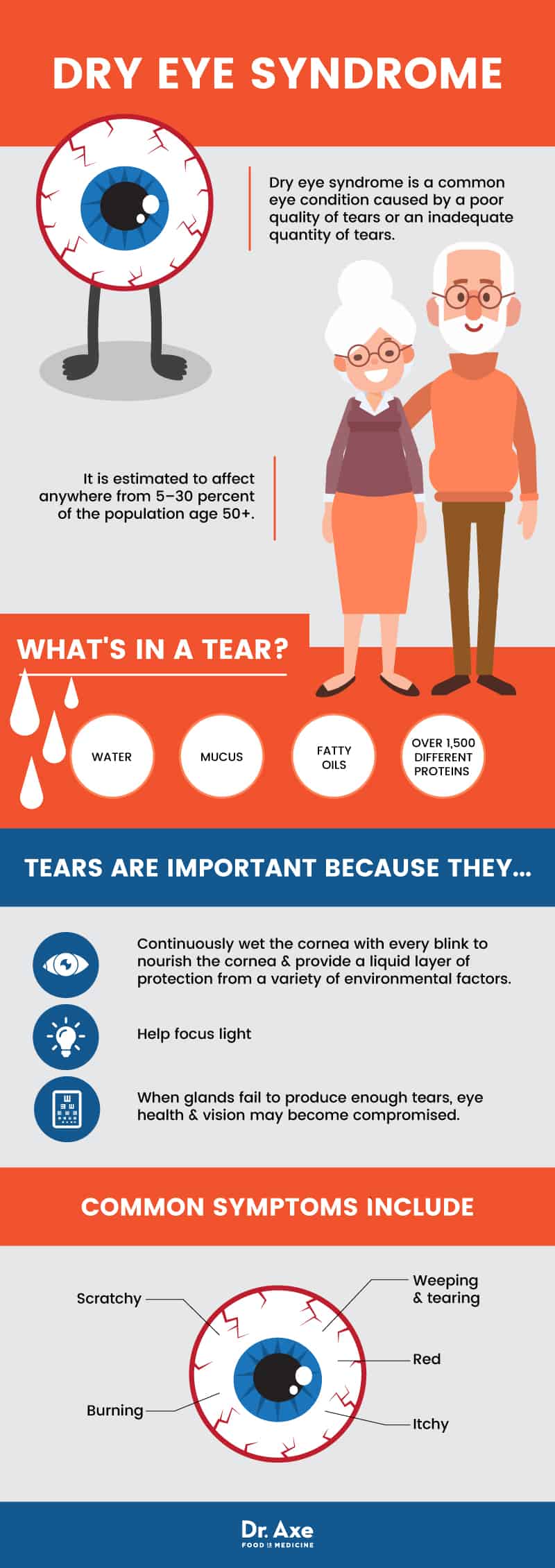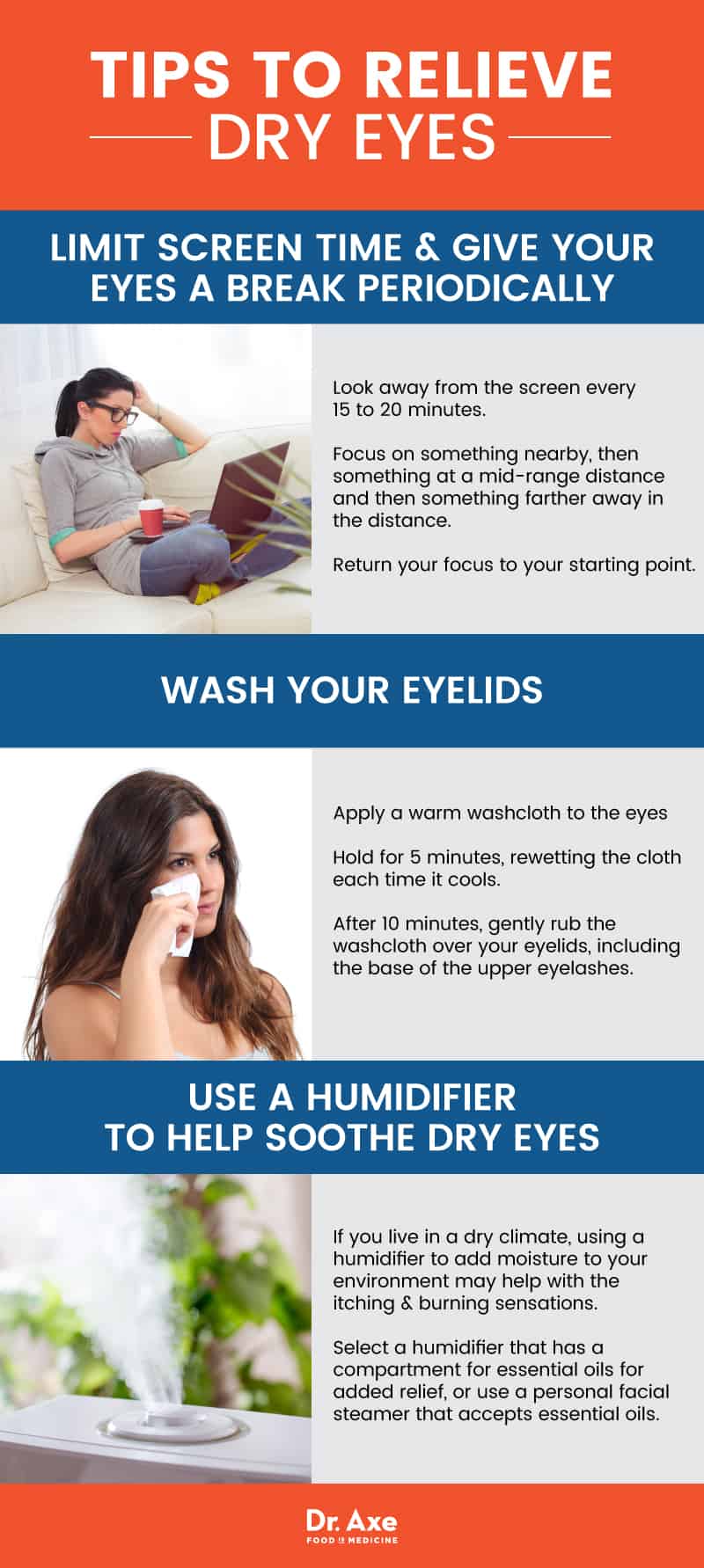This Dr. Axe content is medically reviewed or fact checked to ensure factually accurate information.
With strict editorial sourcing guidelines, we only link to academic research institutions, reputable media sites and, when research is available, medically peer-reviewed studies. Note that the numbers in parentheses (1, 2, etc.) are clickable links to these studies.
The information in our articles is NOT intended to replace a one-on-one relationship with a qualified health care professional and is not intended as medical advice.
This article is based on scientific evidence, written by experts and fact checked by our trained editorial staff. Note that the numbers in parentheses (1, 2, etc.) are clickable links to medically peer-reviewed studies.
Our team includes licensed nutritionists and dietitians, certified health education specialists, as well as certified strength and conditioning specialists, personal trainers and corrective exercise specialists. Our team aims to be not only thorough with its research, but also objective and unbiased.
The information in our articles is NOT intended to replace a one-on-one relationship with a qualified health care professional and is not intended as medical advice.
Itchy, Dry Eyes? How to Relieve Dry Eye Syndrome 9 Natural Ways
February 19, 2018

Dry eyes are caused when there is insufficient tear production, or the quality of tears is poor. Tears are an integral part of eye health, and without adequate tear production you can be at risk for a scratched cornea, corneal ulcers and eye infections as the tears aren’t washing away particulates and germs. (1) The severity of symptoms can vary widely depending on the season, the time of day, environmental or allergen issues and even the amount of time spent looking at computers, tablets or phones.
One of the most common eye problems, dry eye syndrome is more prevalent than diabetes, cancer, and heart disease. And, according to the National Institutes for Health’s, National Eye Institute, millions of adults in the United States have troubling symptoms. (2, 3)
There are a variety of underlying health conditions, as well as many over-the-counter (OTC) and prescribed medications, that can lead to dry eyes. Getting to the root cause of poor tear production can help to find the best and most effective treatment. For example, if a certain medication is causing the problem, switching to a different medication may relieve the symptoms.
However, for some people, symptoms may last a lifetime. This can be true for those who have underlying medical conditions like blepharitis, Sjögren’s syndrome, diabetes, certain thyroid disorders or a vitamin A deficiency. As dry eye syndrome is estimated to affect anywhere from 5 percent to 30 percent of the population age 50 or older, and it is often chronic, finding an effective treatment is vital.
Conventional treatments often include eye drops or medications to spur tear production and there are several surgical options available for those experiencing moderate-to-severe symptoms. In addition to these options, there are a number of natural treatments for dry eye syndrome that may help relieve the dryness that causes the itching, burning, aching, sensitivity to light and blurred vision that affects so many with this condition.
What Is Dry Eye Syndrome?
Dry eye syndrome is a common eye condition caused by a poor quality of tears or an inadequate quantity of tears. Tears are necessary to keep the surface of the eye properly lubricated, keeping it moist and free from dust and other particulates.
In healthy eyes, basal tears continuously wet the cornea with every blink. This nourishes the cornea and provides a liquid layer of protection from a variety of environmental factors. When glands fail to produce enough tears, eye health and vision may become compromised. Tears on the surface of the eye also play a vital role in focusing light. Dryness of the eye may cause focusing and overall vision problems. (4)
Tears are composed of water, mucus, fatty oils and over 1,500 different proteins that lubricate the eye. Along with inadequate production of tears, if the composition of the tears becomes imbalanced, dry eye symptoms may occur.
The risk for developing dry eye syndrome increases with age, and women have a higher prevalence of this condition compared to men. Certain medications and certain underlying health conditions may cause it, resulting in the bothersome symptoms including scratchy, burning, itchy, red, weeping and tearing eyes.
Related: How to Get Rid of Eye Boogers

Signs & Symptoms
Recognized signs and symptoms of dry eyes include: (5)
- Itchiness ranging from mild to severe
- Excessive tearing
- Weeping of mucus
- Stringy mucus upon waking or during the day
- Burning sensation
- Stinging
- Redness
- Feeling something is in the eye
- Eyelids feel heavy
- Blurred vision
- Sensitivity to light
- Difficulty wearing contact lenses
- Difficulty driving at night
- Eye Fatigue
Causes & Risk Factors:
Dry Eye Syndrome Risk Factors:
- Being 50 or older
- Being female
- Smoking, or exposure to second-hand smoke
- Prolonged time on a computer, phone or tablet
Certain medications, underlying health conditions and environmental factors can cause dry eye syndrome. These include: (6)
- Antihistamines
- Decongestants
- Antidepressants
- Diuretics
- Birth control
- Hormone replacement therapy
- Anti-anxiety medications
- Medications for Parkinson’s disease
- High blood pressure medications
- Thyroid disorders
- Rosacea
- Blepharitis
- Entropion
- Ectropion
- Sjögren’s syndrome
- Scleroderma
- Rheumatoid arthritis
- Diabetes
- Lupus
- Vitamin A deficiency
- Smoke
- Wind
- Dry/arid environment
- Seasonal allergies
- Laser eye surgery — 20 percent to 40 percent report significant symptoms (7)
- Wearing contact lenses
- Menopause
A note about dry eye syndrome in U.S. Veterans: A study published in the American Journal of Ophthalmology found that certain conditions — including PTSD, thyroid disease, sleep apnea and depression — increased the risk of dry eye syndrome. Researchers studied 16,862 patients who were military veterans and found high rates of dry eye syndrome in both men and women, particularly those with diagnoses of post-traumatic stress disorder (PTSD) and depression. (8)
Conventional Treatment
Diagnosing dry eye syndrome can be a bit of a challenge as the causes vary so widely from person to person, and the severity of symptoms is so dependent on environmental factors such as the weather. Your primary care physician will refer you to an ophthalmologist for a comprehensive eye examination and health history; be prepared to discuss all medications you take (and their dosing).
Your eye doctor will then measure the volume of your tears and quality of your tears through a variety of tests, including the Schirmer’s test and slit-lamp examination. These are not painful tests and they allow your ophthalmologist to get a complete picture of your overall eye health. (9)
If your doctor believes that one of your medications is causing dry eye syndrome, they may recommend a different medication that doesn’t have the same side effects. If the root cause is linked to an underlying medical condition, treating the condition effectively may clear up the symptoms of dry eyes.
To relieve symptoms, your doctor may suggest:
- Over-the-counter eye drops or artificial tears
- Prescription medications to reduce eyelid inflammation that stops oil glands from secreting oil into your tears
- Oral or topical antibiotics to reduce inflammation
- Slow dissolving eye inserts that release a substance found in eye drops
- Oral or topical cholinergics, a tear-stimulating drug to help tear production
- Eye drops to control inflammation in the cornea
- Cyclosporine, an immune-suppressing medication
- Corticosteroids
- Autologous eye drops made from your blood, often reserved for those with severe symptoms
- Tear duct plugs to prevent the loss of tears
- Thermal cautery, a more permanent solution to prevent the loss of tears
- Surgery to close the tear ducts that drain tears
- Contact lenses specifically designed for those with dry eyes that protect the surface of the eye while trapping in moisture
- Thermal pulsation procedure called LipiFlow to unblock oil glands
- Intense-pulsed light therapy and eyelid massage
9 Natural Ways to Relieve Dry Eye Syndrome
1. Limit Screen Time.
The more time you spend looking at a screen, the greater the risk for developing dry eyes. If you must spend prolonged time using a computer, tablet or phone, take periodic breaks to help reduce eye strain and dry eyes.
Look away from the screen every 15 to 20 minutes and focus on something nearby, then something at a mid-range distance and then something farther away in the distance, and then return your focus to your starting point. Before each transition, blink two to three times to lubricate your eyes. Also, the position of the screen is very important. Keep the center of the screen just below eye level so you don’t have to open your eyes as wide. This may help you keep more moisture in your eyes by slowing the evaporation of tears.
2. Wear Sunglasses.
When you are outside, wear wraparound sunglasses to protect your eyes from dust and the wind that can cause tears to evaporate.
3. Wash & Massage Eyelids.
According to the Mayo Clinic, those with blepharitis, and other conditions associated with eyelid inflammation, may benefit from frequent eyelid washing. Apply a warm washcloth to the eyes and hold for five minutes, rewetting the cloth each time it cools. After 10 minutes, gently rub the washcloth over your eyelids, including the base of the upper eyelashes.
To help fight inflammation, massage a touch of coconut oil onto the eyelids and eyelashes. Coconut oil demonstrates antibacterial, antifungal, antimicrobial, anti-parasitic, antiviral and anti-inflammatory properties. While hydrating the skin around the eyes, the lauric acid helps repair damaged skin and protect against ultraviolet radiation. And, according to a study published in the International Journal of Molecular Sciences, coconut oil helps to reduce inflammation after UVB exposure, plus protects skin from UV radiation. (10)
4. Eat MORE Vitamin A-Rich Foods.
For some people dry eye syndrome is directly linked to a vitamin A deficiency. This nutrient is vital for vision health, growth, cell division, reproduction, immunity and protecting against free radicals. The Recommended Daily Allowance (RDA) of vitamin A for adult females is 700 micrograms a day (750 micrograms when pregnant and 1,300 micrograms when breast-feeding) and 900 micrograms for men.
The body converts beta carotene into vitamin A. Boost your vitamin A intake by eating grass-fed beef liver, sweet potatoes, carrots, apricots, cantaloupe and plenty of leafy greens. (11)

5. Use a Humidifier.
If you live in a dry climate, using a humidifier to add moisture to your environment may help with the itching and burning sensations. Select a humidifier that has a special spot to place essential oils, or use a personal facial steamer that accepts essential oils. Select a soothing oil like lavender to calm your nerves; eucalyptus if you have a respiratory infection or a stuffy nose; or rose essential oil to help reduce skin inflammation. (12, 13, 14)
6. Put Coconut Oil In Your Eyes.
In addition to massaging coconut oil on your eyelids, coconut oil is safe to put in your eyes. According to a pilot study on rabbits published in the journal Evidence Based Complementary Alternative Medicine, the fatty acids in the coconut oil provide a protective layer over the eyes and help to keep eyes moister. Researchers encourage further study and research but support using coconut oil for those with dry eyes. (15)
7. Eat More Omega-3 Fatty Acid-Rich Foods.
Flaxseeds, Atlantic mackerel, wild-caught salmon, walnuts, chia seeds and other omega-3 rich foods may help reduce symptoms. In fact, a meta-analysis of studies conducted between 2007 and 2013 indicate that omega-3 fatty acids are associated with better TBUT (tear break-up time) and better Schirmer’s test results. Researchers encourage well-designed randomized control trials to support omega-3s for dry eye syndrome. (16)
8. Take a Fish Oil Supplement.
In multiple placebo-controlled clinical trials, taking a fish oil supplement is linked to significant improvement in dry eye syndrome symptoms and overall improvement in irritation. And, for those with blepharitis and meibomian gland disease, the anti-inflammatory properties appear to help. In one study, participants took 180 milligrams EPA and 120 milligrams DHA twice a day for 30 days with great results. (17, 18, 19, 20, 21)
9. Try Acupuncture.
In a meta-analysis of seven randomized controlled trials published in the journal Evidence Based Complementary Alternative Medicine acupuncture is associated with significantly better results than artificial tears. In fact, patients receiving acupuncture had significantly better results in both the TBUT (tear break-up time) and the Schirmer’s test than patients who received artificial tears. (22)
Related: Do Blue Light Glasses Work? Potential Benefits for Sleep & Eye Health
Precautions
The symptoms of dry eye syndrome should not be overlooked. They may be the sign of a serious underlying health condition or may be caused by a prescription medication.
In addition, dry eyes put you at a heightened risk for certain eye problems including eye infections, corneal ulcers and other vision problems. Tears help to protect the cornea and are essential in helping your eye focus properly.
Dry Eye Syndrome Key Points
- Dry eye syndrome is a common eye condition caused by insufficient or poor tear quality.
- Tears are a protective agent and are vital for eye health and help to prevent corneal abrasions, or a scratched eye.
- The root cause may be attributed to an underlying health condition like Sjögren’s syndrome, scleroderma or diabetes, or the symptoms may be a result of a prescription or over-the-counter medication.
- The root cause should be addressed for best results.
- Conventional treatments include eye drops, prescription medications, medical procedures and surgery.
9 Natural Remedies for Dry Eye Syndrome
- Limit Screen Time and during prolonged use, look away from the screen, refocus the eyes and blink.
- Wear Wraparound Sunglasses to protect against dust and the wind.
- Wash & Massage Eyelids using a warm wash cloth followed by coconut oil massage.
- Eat Vitamin A-Rich Foods like grass-fed beef liver, leafy greens, sweet potatoes, carrots, apricots and cantaloupe.
- Use a Humidifier or a facial steamer with your favorite essential oil.
- Put Coconut Oil in Your Eyes to provide a protective layer over the cornea and to help keep the eyes moister.
- Eat More Omega-3 Fatty Acid Rich Foods like flaxseeds, Atlantic mackerel, wild-caught salmon, walnuts and chia seeds.
- Take 180 milligrams EPA and 120 milligrams DHA Fish Oil Supplement twice a day.
- Try Acupuncture.








